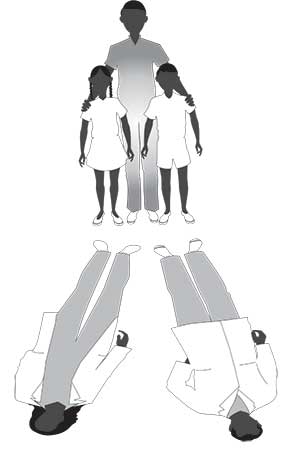Kathan Shukla
What if you realize that some of your students have the potential to become great physicists? What if you know that if you nurture their interest in science and help them develop knowledge and skills, they will extend human knowledge in the future? They may work with the finest of universities and research labs and come up with breakthroughs for the problems that we are facing today. What can you do as their physics teacher to help them succeed as physicists?
 To explore these questions it is important to understand the critical elements of scientific enquiry. The development of science relies heavily on the following:
To explore these questions it is important to understand the critical elements of scientific enquiry. The development of science relies heavily on the following:
Empirical experimentation
A critical first step here is developing hypothesis(es). Based on the things that we know, the idea is to take a step forward and make an educated guess about the scientific phenomenon, and the relation between various study variables. To test this hypothesis, an experiment is designed, data are collected, and results are reported. Replicability of the experiment is one of the most important elements of scientific inquiry. It means that the results should be consistent under the same experimental conditions, irrespective of who conducts the study. Therefore, scientific experiments need high-levels of methodological rigor and transparency. Finally, the inferences are put in the context of the existing scientific literature and the entire work is shared with the scientific community for further scrutiny.
Theoretical development
A theory is an attempt to make sense of the results of a set of well-tested hypotheses often related to a particular scientific phenomenon. Clear rationale, logic, and mathematical computations often serve as corner stones for theoretical development. One critical utility of theoretical work is its predictability. It explains and predicts how nature behaves in given physical conditions.
It is important to note that both theoretical and empirical work may develop simultaneously and/or sequentially, and there
is no particular order for scientific development. Though professional researchers often specialize in a particular approach (theoretical or experimental), both approaches are heavily interdependent. Theoretical development provides direction for experimental work, which in turn, validates (or rejects) theoretical work. Both approaches collectively advance scientific knowledge.
Now, the critical question for teachers:
• What kind of teaching approach (or learning experiences) in the physics classrooms could help nurture the required skills for empirical and theoretical developments of science?
Let’s say a teacher wants to employ this teaching approach for the chapter – Lights, Shadows, and Reflection (Class VI, CBSE). The class is divided into smaller groups (3-5 students/group).
| Steps for scientific inquiry | Flashlight, balls of different radii (ping-pong ball, tennis ball, and football), cardboard with small hole, vernier calipers, 1 meter ruler |
|---|---|
| Experiment |
|
| Theoretical work | Students write a summary of their understanding of light and shadows, and relation between distances between spheres of different radii and light source.
|
| Follow up experimentation | In this step, students empirically test their theoretical predictions. |
| Sharing and discussion | Once the students have empirically tested their theoretical predictions, all student-groups present their work with the rest of the class. |
Clearly, the lesson presented above will not fit into a traditional 35 min class and may demand a 2-3 hour laboratory session. In addition, students may need time to write the entire exercise in their own words. My personal experience and observation suggests that we do not place enough emphasis on scientific writing in our schools. Writing in science is very different from writing in languages/liberal arts. One needs to be concise and lucid. The objective is to present your work to scholars, and you would not like to waste their time with unnecessary words or complex and/or unclear language. In addition, there is absolutely zero tolerance for plagiarism in scholarly work. Therefore, it is highly desirable for the students to get training in writing their scientific work in original language with appropriate citations right from the beginning. In conclusion, it is high time we treat physics (and science in-general) as a way of thinking and learning through systematic inquiry. As per UNESCO’s Science Report 2010, one of the biggest challenges for India in the coming years will be to significantly improve both quantity and quality of scientists and researchers to become an influential participant in the global knowledge economy. We can no longer afford to segregate the subject-content from the fundamental dimensions of scientific development if we want to nurture scientific minds. I hope the ideas and the example presented in this article help educators integrate theoretical and empirical components of inquiry in their physics classrooms.
The author is an educational researcher and a Ph.D. candidate at the University of Virginia. He can be reached at kathan.shukla@gmail.com.
